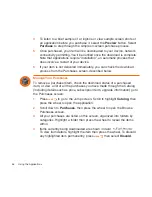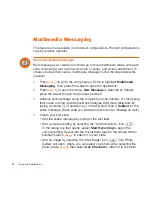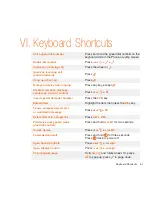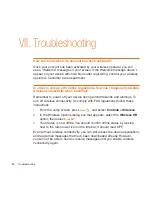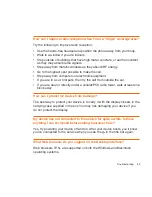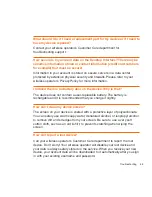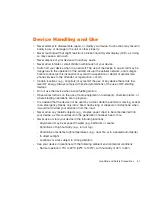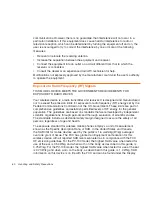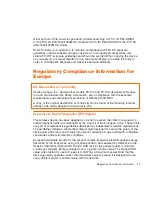
communications. However, there is no guarantee that interference will not occur in a
particular installation. If this equipment does cause harmful interference to radio or
television reception, which can be determined by turning the equipment off and on, the
user is encouraged to try to correct the interference by one or more of the following
measures:
• Reorient or relocate the receiving antenna.
• Increase the separation between the equipment and receiver.
• Connect the equipment into an outlet on a circuit different from that to which the
receiver is connected.
• Consult the dealer or an experienced radio/TV technician for help.
Modifications not expressly approved by the manufacturer could void the user’s authority
to operate the equipment.
Exposure to Radio Frequency (RF) Signals
THIS MODEL DEVICE MEETS THE GOVERNMENT’S REQUIREMENTS FOR
EXPOSURE TO RADIO WAVES.
Your wireless device is a radio transmitter and receiver. It is designed and manufactured
not to exceed the emission limits for exposure to radio frequency (RF) energy set by the
Federal Communications Commission of the U.S. Government. These limits are part of
comprehensive guidelines and establish permitted levels of RF energy for the general
population. The guidelines are based on standards that were developed by independent
scientific organizations through periodic and thorough evaluation of scientific studies.
The standards include a substantial safety margin designed to assure the safety of all
persons, regardless of age and health.
The exposure standard for wireless mobile phones employs a unit of measurement
known as the Specific Absorption Rate, or SAR. In the United States and Canada,
the SAR limit for mobile devices used by the public is 1.6 watts/kg (W/kg) averaged
over one gram of tissue. The FCC has granted an Equipment Authorization for this
wireless device with all reported SAR levels evaluated as in compliance with the FCC
RF emission guidelines. For the PV-100 model, the highest SAR value when tested for
use at the ear is 0.54 W/kg and when worn on the body, as described in this guide, is
0.75 W/kg. For the PV-108 model, the highest SAR value when tested for use at the ear
is 0.73 W/kg and when worn on the body, as described in this guide, is 1.2 W/kg. SAR
information on this device is on file with the FCC and can be found under the Display
60
Handling and Safety Precautions

